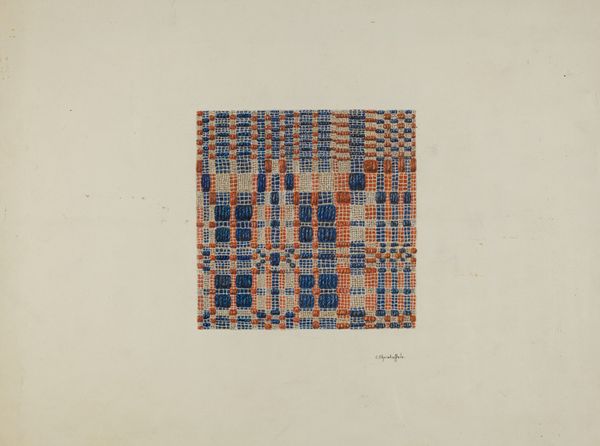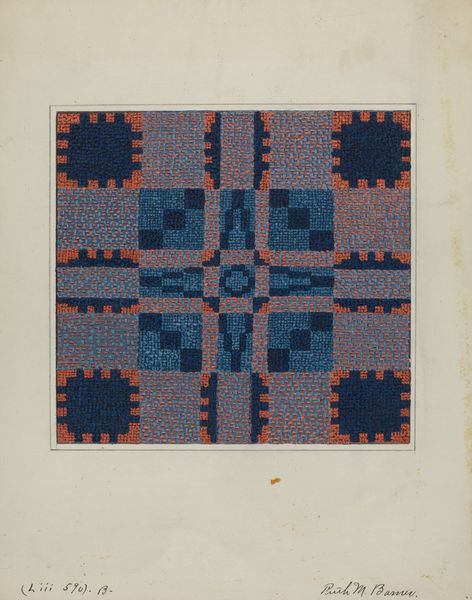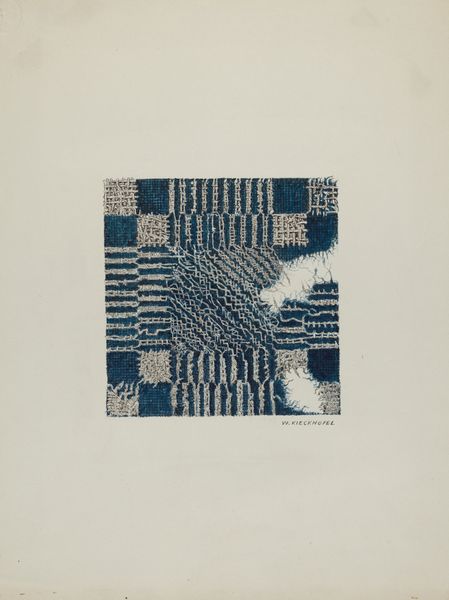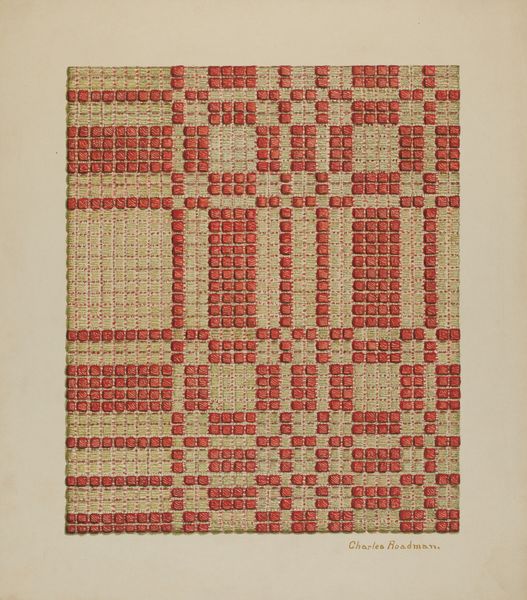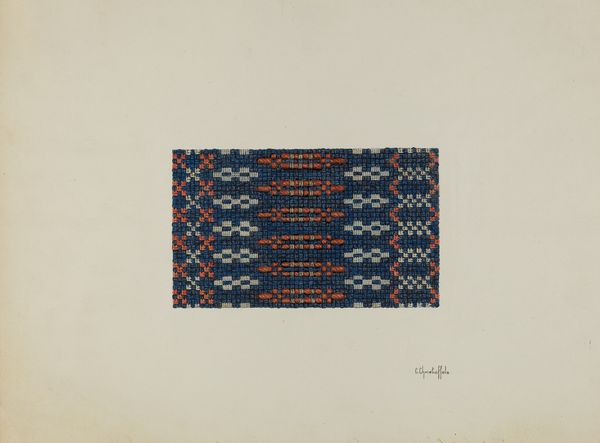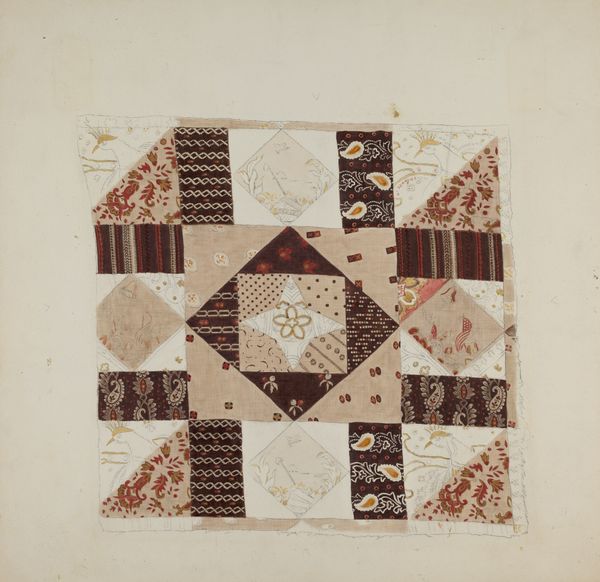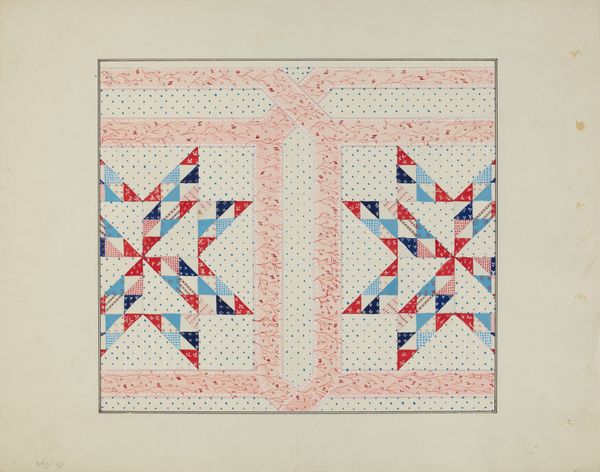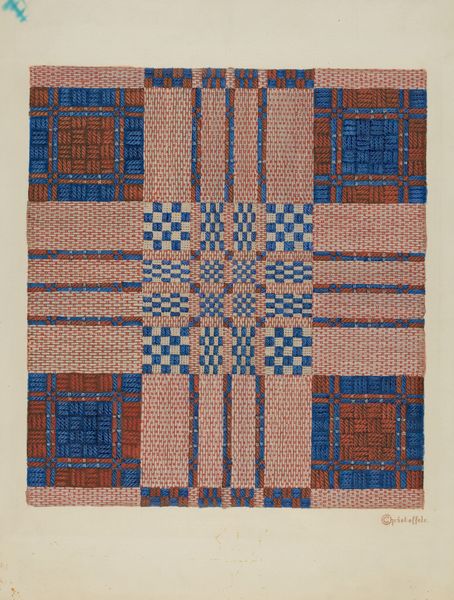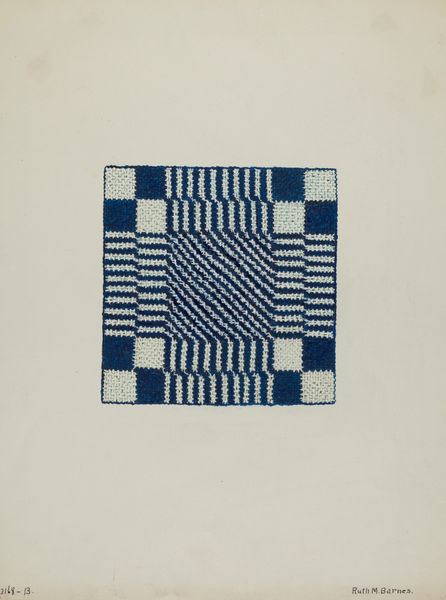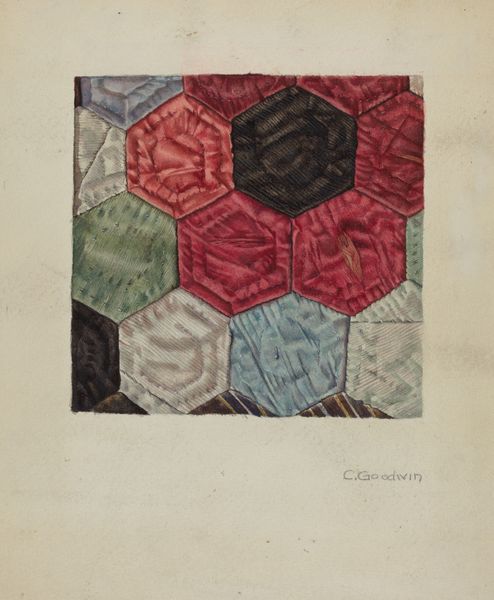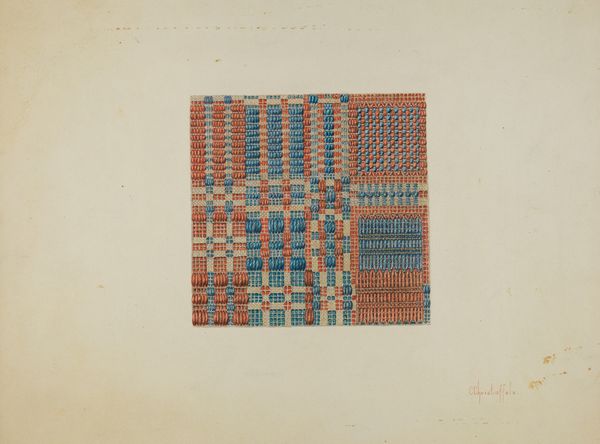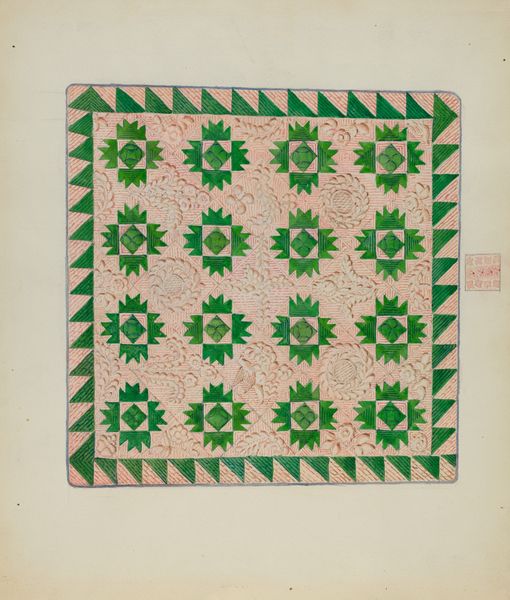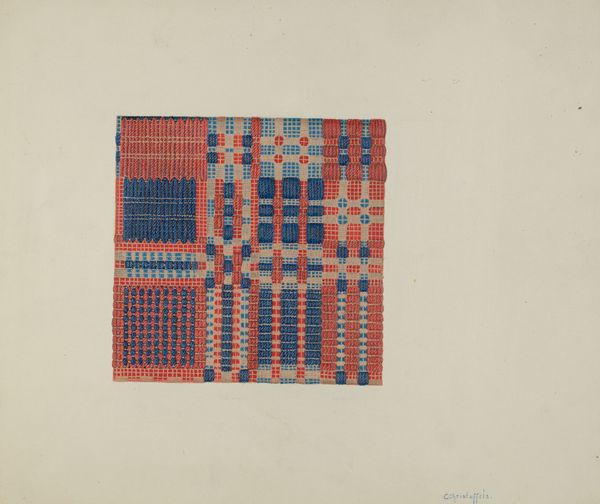
drawing, mixed-media, textile
#
drawing
#
mixed-media
#
pattern
#
textile
#
folk-art
#
geometric
#
decorative-art
Dimensions: overall: 35.6 x 26.7 cm (14 x 10 1/2 in.)
Copyright: National Gallery of Art: CC0 1.0
Curator: Immediately, the detail arrests me—the intricate woven patterns feel so tactile, even though it's just a representation. Editor: We are looking at a drawing called "Coverlet," dating to around 1940. The artist is Cornelius Christoffels, and it combines drawing and mixed media techniques. Curator: The geometric precision is captivating, but what about the act of representation itself? Why choose to depict a coverlet? Was this a preparatory drawing for a weaving, or intended as a finished work in itself? The textile as a medium has long been associated with labor and domesticity, often undervalued compared to what is traditionally called fine art. Editor: Well, folk art pieces like coverlets often served as symbols of community identity, showcasing local materials and craftsmanship. They’re about everyday life made visible, carrying within them a story of cultural tradition and collective effort. These images can serve as visual reminders of societal values and historical context. Curator: Precisely! And here, Christoffels draws our attention to the making process. We see the individual threads, the pattern repetitions. I'm interested in understanding if such works were actively displayed in homes or galleries to showcase techniques. How was the labor involved in their creation perceived and valued by those within the community versus the fine art world? Editor: Good questions, especially the part about value. Institutions like museums definitely shape what is deemed important or 'worthy' of preservation. Sometimes these beautiful handmade pieces are considered lesser just because they blur the line between craft and fine art. It raises the issue: whose stories are we preserving and how does showing them affect perceptions of craft today? Curator: Indeed. In celebrating the inherent labor and artistry within functional objects, we challenge traditional hierarchies that prioritize certain materials and skill sets over others. Editor: Absolutely. "Coverlet" invites us to reconsider those definitions and broaden the narratives we choose to represent. Curator: This discussion is enlightening; it helps uncover more complex questions concerning value. Editor: It does! It is amazing how much more context these kinds of approaches create.
Comments
No comments
Be the first to comment and join the conversation on the ultimate creative platform.

